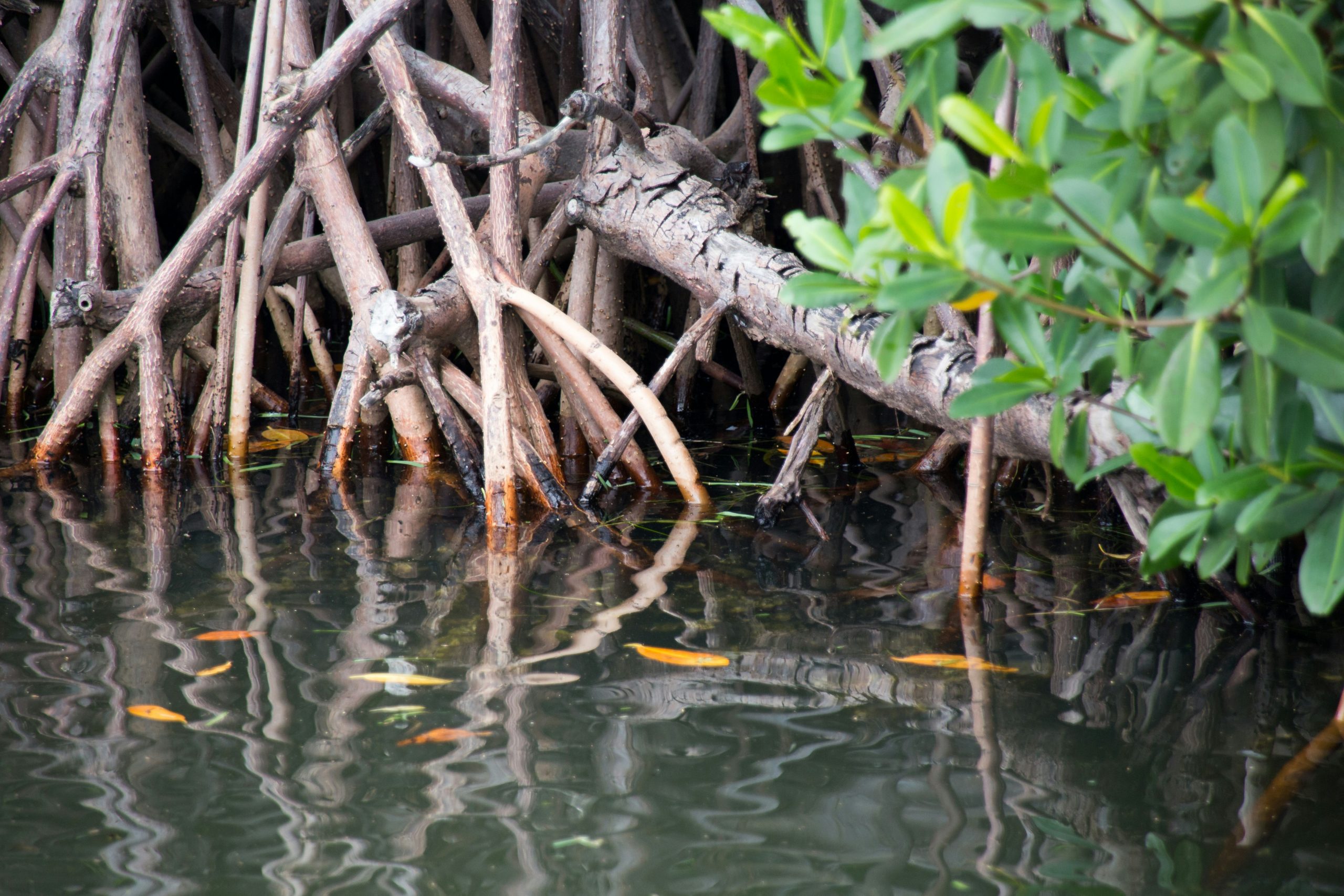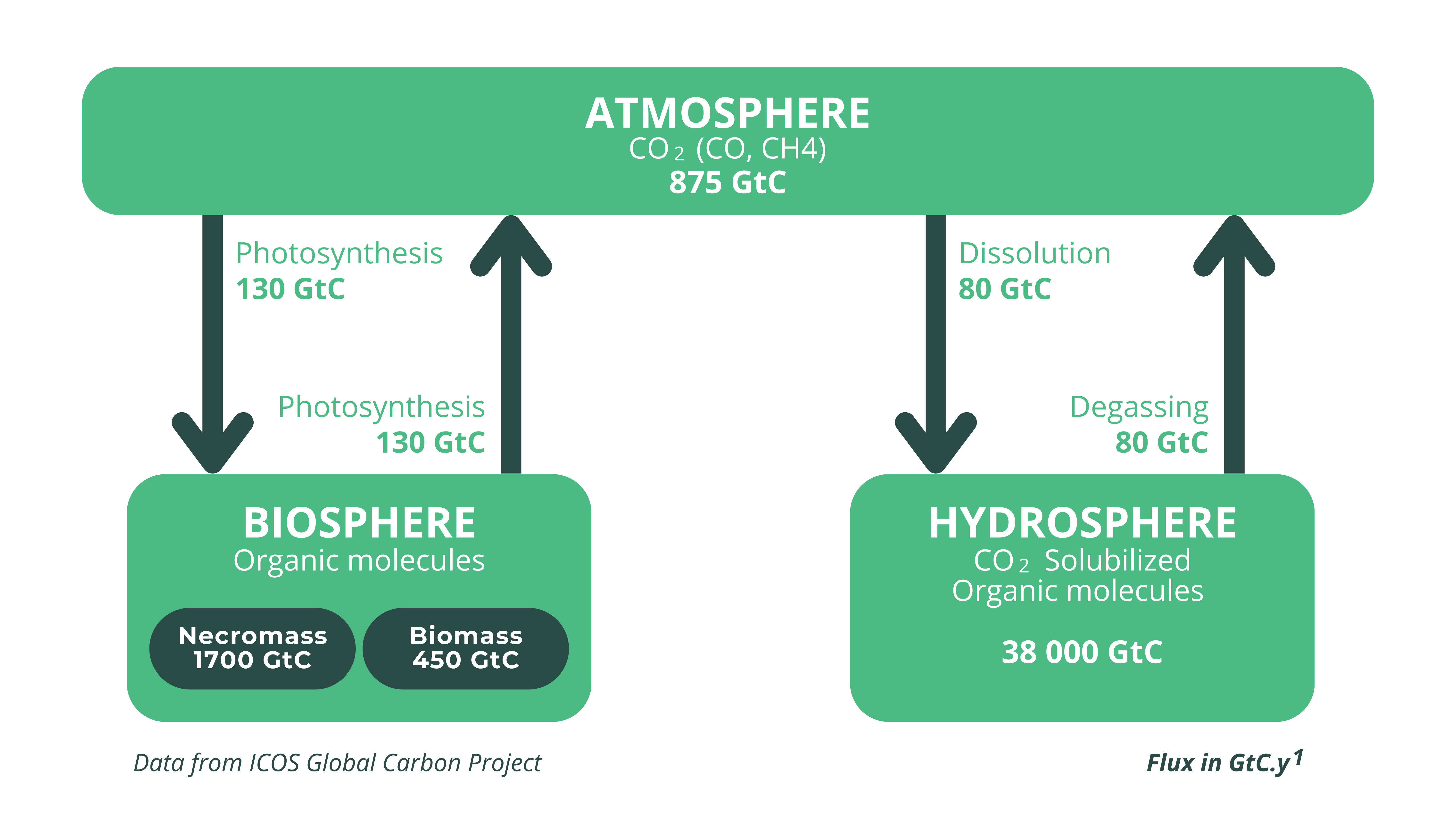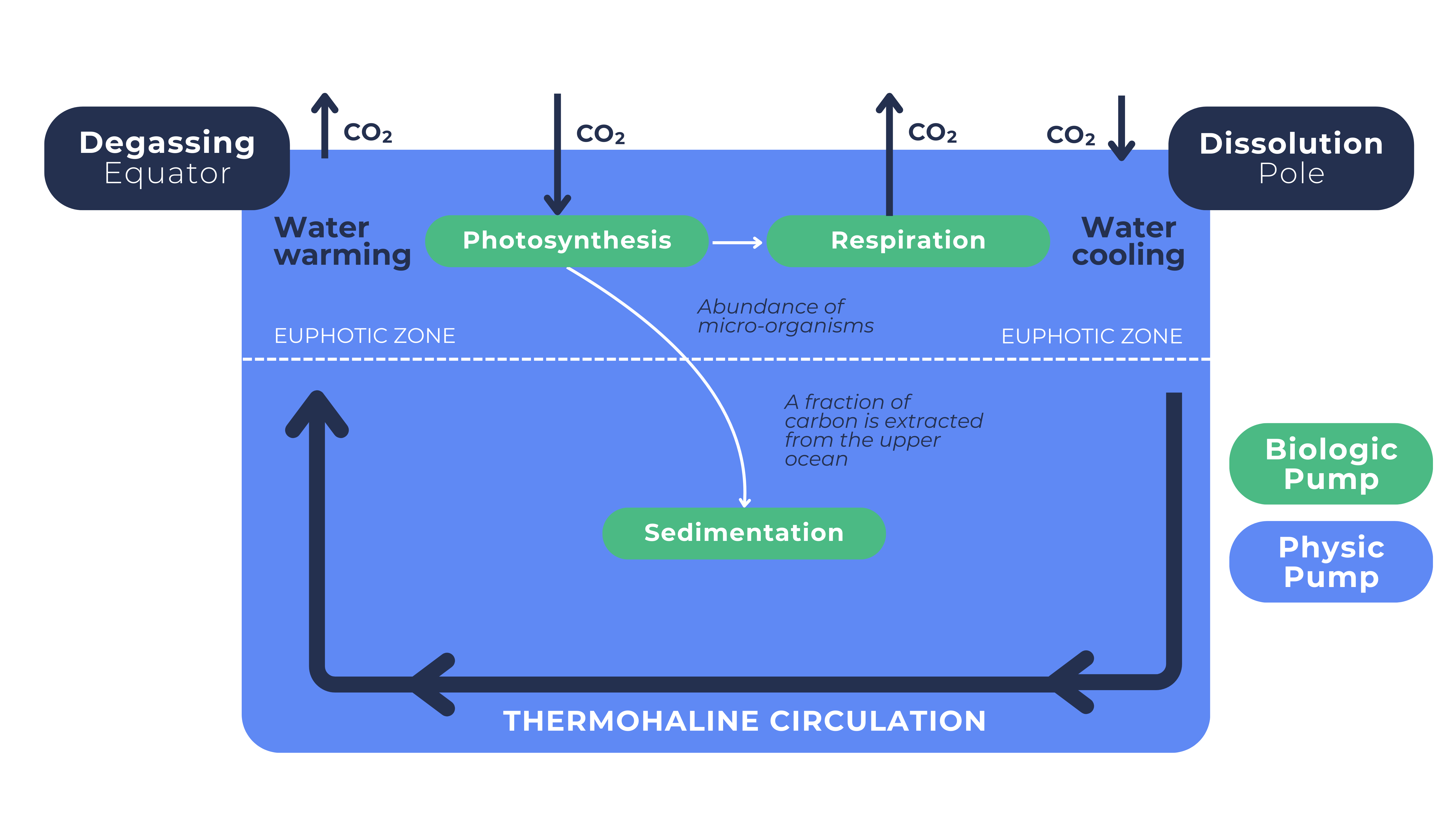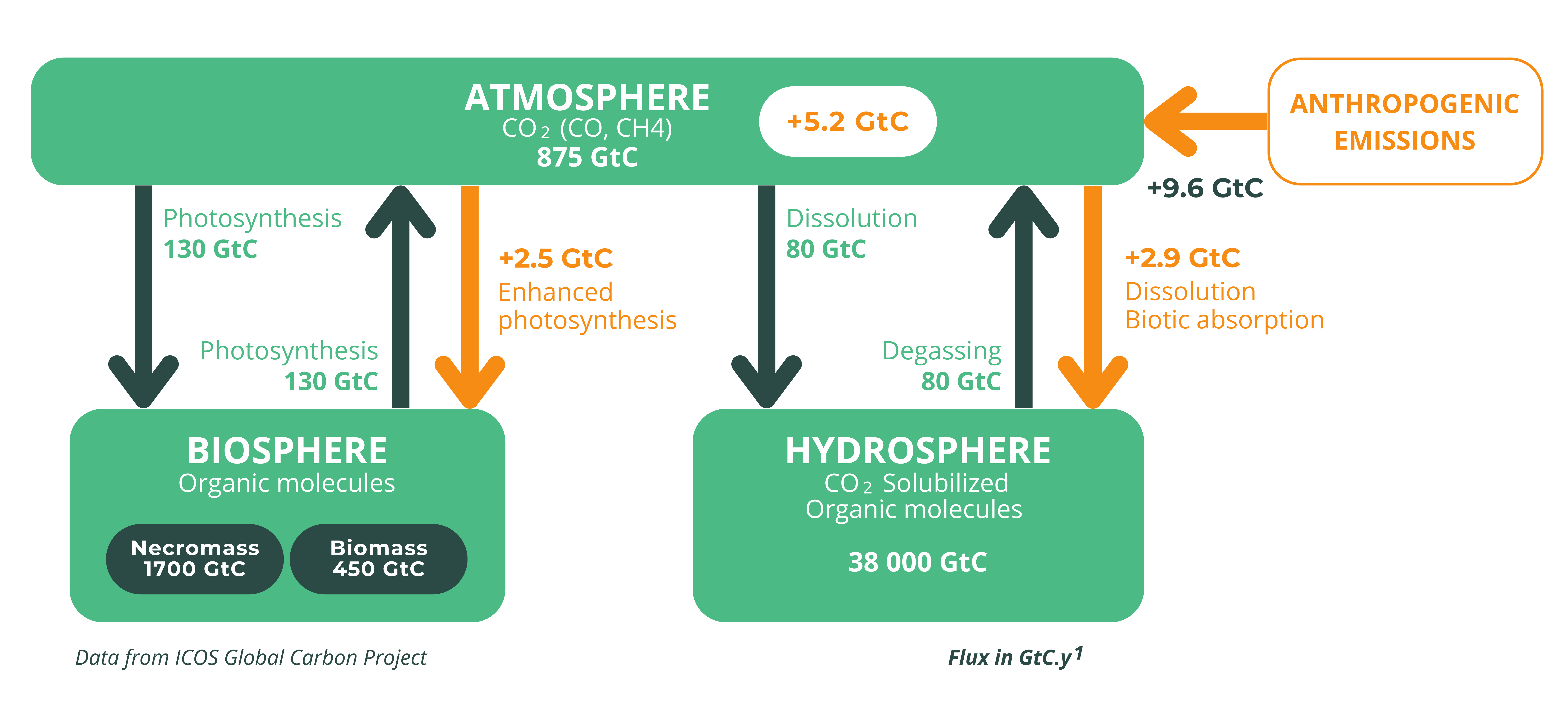The Climate-Biodiversity Nexus
How environmental finance can solve the issue?

Financing Nature: Leveraging Environmental Credits to Support Climate Goals
Biodiversity credits were taking the centre stage at COP16 on biodiversity in Cali. It is likely to be the same for carbon credits in the incoming COP29 taking place in Azerbaijan. The reason for that is simple: biodiversity-enhanced nature-based solutions are highly required for a reasonable chance of holding global warming below 2°C.
Yet we are reaching an equilibrium’s breaking point where biodiversity carbon sinks capacity is altered by climate change, potentially leading to irreversible effects. We need to consider the Climate & Biodiversity nexus and reorient financial flows toward Nature by leveraging innovative mechanisms such as biodiversity-enhanced carbon credits and standalone biodiversity credits.
The carbon cycle: a sensitive equilibrium between different carbon sinks
Carbon at the Earth’s surface is distributed between three main sinks: biosphere, hydrosphere and atmosphere. The flows between these reservoirs result in the carbon cycle. Altogether the planet contains more than 40,000 gigatons of carbon (GtC), with around 200 GtC absorbed from and emitted towards the atmosphere, through photosynthesis and respiration with the biosphere, and dissolution and degassing with the hydrosphere.

Primary carbon exchanges between the ocean and the atmosphere are abiotic and closely tied to water temperature: cold water releases CO2, while warm water absorbs it. Overall, differences in water density due to variations in salinity and temperature drive a global ocean current known as the thermohaline circulation: certain areas of the ocean absorb CO2, whereas other regions release it. Through photosynthesis, plants absorb CO2 from the atmosphere and then release it back through respiration and when they decompose.

All these relations between the different reservoirs are complex and scientifically unknown – though consequent progress has been made in the last decades. Such natural mechanism is based on a sensitive equilibrium challenged today by growing anthropic emissions.
Biodiversity absorbs part of our emissions
Anthropogenic emissions are currently emitting a new carbon influx of + 9.6 GtC per year into the atmosphere, mainly in forms of carbon dioxide, derailing the whole system with the greenhouse effect.
Lucky for us, part of it is absorbed by the biosphere and by the hydrosphere. Rising atmospheric CO2 levels naturally boosts photosynthesis, enabling plants to take up more carbon. It’s estimated that plants are now absorbing an additional 2.5 gigatons of carbon annually, which accounts for about 28% of the CO2 emissions generated by human activities. Plants play a crucial role in carbon storage by transferring carbon into the ground as their deep root systems decompose into soil necromass. They also produce carbon-rich compounds, called exudates, which are stored in the soil and contribute to long-term carbon sequestration. These natural processes have a buffering effect of biodiversity that helps slowing the rate of climate change. In total, nature-based solutions can provide 37%, or a one third of climate mitigation efforts needed through to 2030 for a reasonable chance of holding warming below 2 °C.
Marine biodiversity also plays a key role, particularly through the diversity of microorganisms, such as phytoplanktons that produce organic matter through photosynthesis, using dissolved CO2 from the water. Most marine microorganisms grow and decompose at the surface in the euphotic zone where light can pass through. A portion of the organic matter is then transported from the surface to the deeper ocean layers. This process is known as the Ocean’s Biological Pump, responsible for most of the carbon vertical gradient.

Yet biodiversity carbon sinks are not enough, as they seem to have reached their maximum capacity. Each year, around +5.2 GtC ends up into our atmosphere, mainly in forms of CO2 emissions. This directly impacts climate change, but also endangers our whole ecosystem.
We are reaching the equilibrium’s breaking point
Biodiversity has demonstrated an impressive capacity for adaptation, yet human impacts are now pushing ecosystems to their breaking points. The balance may falter, leading to challenges in ecosystem recovery and threatening essential ecological functions. Rising temperatures due to climate change are reshaping biodiversity, often resulting in declines in species abundance as organisms struggle to survive.
This can generate several vicious cycles, with the most commons being the melting of polar ice caps and the heightened frequency of wildfires. The seas’ ability to absorb atmospheric carbon is also reduced, as rising temperature alters the capacity of seawater to dissolve gases. Furthermore, soil emissions are projected to increase by as much as 40% by the end of the century if current trends persist. Climate change causes soils to dry out and accelerates the decomposition of organic matter by microbes as moisture levels in soils are evolving. Drier soils also impact the types of vegetation that thrive in these areas – and any shifts in plant communities significantly affects soil emissions.
As we depend on biodiversity to absorb part of our emissions, it is crucial to consider how we can actively preserve and protect these diverse ecosystems for the future. If biodiversity loss continues, we will face an unabatable temperature increase. The updated Living Planet Report of WWF has highlighted the urgency of biodiversity preservation, stating that “what happens in the next five years will determine the future of life on Earth.” We need to look beyond carbon and enter into the biodiversity-climate nexus.
Nature can’t wait – Environmental finance must be leveraged
According to the Kunming-Montreal Global Biodiversity Framework, the biodiversity finance gap is estimated at $700 bn a year between now and 2030: $500 bn of harmful subsidies that must be redirected towards Nature, and $200 bn to be mobilized from private and public sources.
We cannot rely on public funding only. Developed countries have vowed to contribute $20bn a year to poorer countries by 2025. Until now, only $163m have been pledged by eight countries (including the UK, Germany, France and Norway). That is less than 1 percent. And there are only few months left. Most pledges are in forms of loans and not grants, which emphasizes the risk of a vicious circle of indebtedness. Furthermore, the Global Biodiversity Framework Fund (GBFF), in charge of allocating those funds, is deemed burdensome to access and too far away from the needs of emerging nations.
Private funding is therefore urgently required. And solutions already exist.
Biodiversity-enhanced carbon credits from high-integrity projects are already available. Biodiversity co-benefits are evaluated through additional standards in addition to the carbon methodology. The Climate, Community & Biodiversity Standards from Verra identifies specific areas under threat through six types of high-conservation values (HCV) such as species diversities or ecosystem habitats. The project is then guaranteeing protection and regular monitoring of the high-conservation values while ensuring the implication of local communities. More than 100 carbon projects have verified biodiversity benefits, spanning across 48 countries. As biodiversity becomes more and more a hot topic for companies – through CSRD, TNFD, SBT-N, NBSAPs and consumer pressure -, this type of additional certification generates a price premium that directly benefits biodiversity and local communities.
A standalone biodiversity credit market is also developing fast. With strong political support from France and the UK right after COP15, the International Advisory Panel on Biodiversity Credits (IAPB) has worked for two years to define high-integrity principles for the whole market, together with the World Economic Forum and the Biodiversity Credit Alliance. They have also launched various pilot projects with the most advanced standards such as Plan Vivo Nature or Verra Nature Framework. More than 35 biodiversity credit schemes and 140 indicators have been developed in recent years – we are now converging towards the standardization of certificate units to establish a common metric. According to estimates, the market could reach from $1bn $7bn by 2030.
At Removall, we help companies to act beyond their value chain by implementing innovative environmental contribution approaches. We propose biodiversity-enhanced carbon projects and biodiversity standalone projects for those willing to play their part. We are convinced that for too long, nature has been a peripheral part of the climate conversation.
Nature can’t wait – so let’s act together!
Sources
- La place des sols dans le cycle du carbone | Planet-Vie (ens.fr)
- Climate change and its impact on biodiversity and human welfare | Proceedings of the Indian National Science Academy (springer.com)
- (PDF) Global warming accelerates soil heterotrophic respiration (researchgate.net)
- A carbon cycle disrupted by human activities – Encyclopedia of the Environment (encyclopedie-environnement.org)
- How much carbon dioxide does the Earth naturally absorb? | MIT Climate Portal
- A carbon cycle disrupted by human activities – Encyclopedia of the Environment (encyclopedie-environnement.org)
- Soil-Based Carbon Sequestration | MIT Climate Portal
- Soil carbon sequestration by root exudates – ScienceDirect
- Natural climate solutions | PNAS
- https://www.researchgate.net/publication/364214764_Global_warming_accelerates_soil_heterotrophic_respiration
Biodiversity Finance: Protect the Planet, Strengthen Livelihoods (ifc.org)
Article written by :

Project Manager - Innovative Environmental Assets